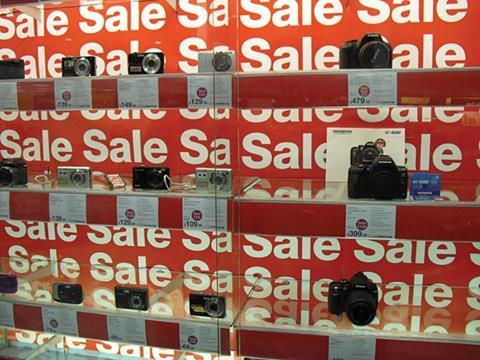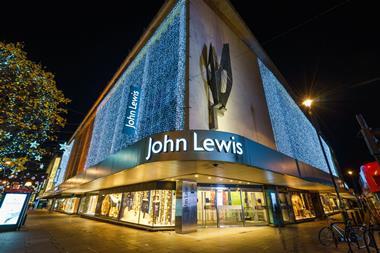The January Sales season started earlier than ever this year, but when consumers hit the shops which retailers were really delivering the goods?

With Christmas Day on a Friday and the VAT rise looming at the end of the year, many retailers opened their stores and began their Sales season on Boxing Day in 2009.
Much of the TV coverage of the Sales focused on the few major London department stores that can always draw a crowd (though mainly a tourist crowd). But what of the provinces?
Were retailers outside London as besieged with customers and was the running of their shops at the peak of the Sales as slick as in their flagship stores?
Retail Week took to the mean streets of middle class Royal Leamington Spa, in Warwickshire, and Solihull, in the West Midlands, to get a taste of what consumers across the country venturing out on Boxing Day and December 27 will have experienced.
Fashion
First to the most famous discounting event on the UK high street, the Next Sale. Rammed with stock, and with almost everything in the womenswear and kidswear departments on Sale (though less so in menswear and homeware), Next delivered in terms of racks full of bargains.
Sometimes the Next Sale can feel a little bit like a jumble sale, but the store staff at the Touchwood branch in Solihull should be commended for keeping everything in order.
The changing rooms were open and queues not prohibitively long. Best of all was the use of gaffer tape to mark out the till queuing system. It looked a little rough and ready, but it did the job without taking up the vast amounts of floor space that queuing barriers do.
In comparison both Gap and Zara felt quieter, or a more tranquil and less high pressure place to shop, depending on how you look at it.
Most of Zara’s Sales space was given over to discounted items, all clearly marked, and in most cases still well merchandised. Small signs at the till said Zara wasn’t holding items over the Sales period, but it was taking returns; there were lots of staff to assist and no queue for the changing rooms.
Gap, meanwhile, had given over the whole front section of its store to Sale items, but as you moved through the store this blurred into full-price stock and it was not so easy to see what was discounted and what wasn’t. There was lots of money to be saved if you were looking for classic Gap items such as its branded sweatshirts. However, unlike Zara, discounts on this season’s fashion items were harder to come by. The store had good footfall, but the tills weren’t ringing non-stop.
Consumer electronics
The out-of-town Currys in Leamington Spa, and the Apple store in Solihull’s Touchwood centre used completely opposite tactics, but both were doing a roaring trade.
Currys had managed a major re-merchandise of its store between Christmas Eve and Boxing Day when Retail Week visited. Interestingly some items that had been on discount before Christmas were now back to full price, while many other items had been reduced. The store still looked great, and was busy with people buying a mixture of smaller items and big-ticket appliances. It was the only retailers visited with point-of-sale material making a big deal of the VAT rise to come.
In contrast, the Apple store was not on Sale. While there were no apparent discounts to be had, the store was heaving to the point of claustrophobic, and people were getting their wallets out. You have to hand it to Apple. Its brand strength and commitment are second to none. If I’d been bought an iPhone for Christmas, I would be pleased that it wasn’t now on Sale, and would probably pay full whack for some accessories too.
Department stores
John Lewis began its Sale on Sunday, December 27, a day later than many other retailers. It gave its staff an extra day off, and I would wager that its overall Sale figures won’t have suffered as a result. The John Lewis car park was already displaying full signs at 11am, just as the store was opening.
Clearance stock in each department of John Lewis was clearly marked, and its concessions were also on Sale offering up to 50% discounts. Customers liked what they saw, and of particular note was how busy its furniture department seemed. There were staff to assist everywhere, and it was the only retailer visited during the Sales where store management had a highly visible presence on the shopfloor.
Marks & Spencer was similarly busy, but its Sale was closer to Next’s than John Lewis in look and feel. Middle class, middle-aged ladies pored over racks of discounted fashion items, but strangely M&S had decided to leave a few non-high fashion, non-Sale items on display right by the front door. It should take a leaf out of John Lewis’ book when it comes to clearly delineating Sale and non-Sale stock.
House of Fraser and Bhs, which are in the older part of Solihull’s town centre, were also less busy in comparison.
Bhs had much stock on discount, with savings of up to 50%, and everything clearly marked. The store still looked good, and there were plenty of staff around so it’s hard to see why it wasn’t busier apart from the pull of John Lewis directing shoppers away from that area of the town.
House of Fraser, meanwhile, was also quiet. Discounts of up to 70% were to be had in some departments, and Recognition card holders were being given an extra 10% discount in the three days following Christmas, but something wasn’t hitting the spot with shoppers.
Although merchandise on Sale was clearly marked in each department, the quality and desirability didn’t seem as high as at John Lewis. For instance, toiletries from high-end brand Molton Brown weren’t on Sale in House of Fraser, but were in John Lewis.
To be fair to House of Fraser it has a much larger store only a few miles away in central Birmingham, and it’s possible that Sales shoppers had headed there instead.
The specialists
Superdrug has put a lot of time and effort into improving the appearance of its stores in the past couple of years, but it let itself down with its Sale.
A small selection of beauty items on discount at the front of store tempted shoppers in, but its main Sale display, down one wall of the store looked more like a closing down Sale than a clearance event. The savings were good, but who wants to buy suncream that looks like it’s seen better days, Dettol or Cif oven cleaner two days after Christmas? Not many Superdrug shoppers in Solihull that’s for sure.
Halfords’ Sale was also lacklustre. The queue for the tills was long, but because for a long time only the most junior members of staff seemed to be serving. There were only selected discounts in the cycle section, and much of the promotional signage was focused on big discounts on items such as car wax and wheel polish, items where there seemed no reason for them to be on Sale.
HMV was doing better. £10 for two popular albums, and lots of discounts on DVDs saw the store busy. Shoppers were out spending their gift cards on in force. The only complaint was that Sale and non-Sale stock was mixed in together on some displays, and the only way to tell was to look at the price stickers. That’s fine if shoppers are looking for particular items, but it made it harder to browse looking for bargains.
Still, Retail Week bought from HMV, and was pleased to get home and find it had made physical purchases that were cheaper than the digital equivalents from other online retailers.
But joint first prize among the specialists has to go to temporary retailer Calendar Club and homewares retailer Lakeland. The queue to pay for items at Calendar Club - where all prices had been slashed by 40% - snaked around the retailer’s stands. It might not be maintaining its margins, but some more established retailers could learn a lesson about how to sell through stock they urgently need to get rid of.
Conversely, Lakeland had relatively few items on Sale. Discounts were mainly focused on Christmas-themed items, but both these and its full-price merchandise was also selling well. All tills were manned by experienced staff, and Retail Week got the friendliest reception from them it received anywhere when making a purchase.
It’s telling that despite all the hype of Sale adverts on TV on Christmas Day itself, that two of the retailers that were really pulling in the punters were Lakeland and Apple, with limited and no stock on Sale respectively.
Despite the continuing uncertainty in the economy shoppers are prepared to come out to the shops (at least when the weather is good) and spend money. And they don’t need huge discounts, what they clearly want is value for money. From Next, to John Lewis, to Lakeland and Apple, this is the strength that united those that had queues of happy customers at their tills.


























No comments yet